Effectiveness Application of Storytelling Methods to Child Moral Development
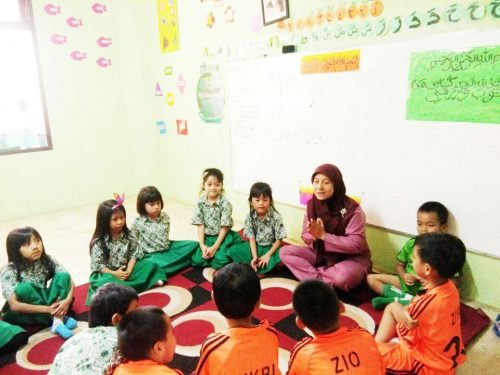
Education is a regular and systematic conscious effort that is put first by those who are responsible for influencing the child to have the nature and character according to the ideals of education. Education as a guide interpreted education is a must-have for every human being without exception wherever and whenever he is.
Education is very important in life, both in family life and in the life of nation and state. Therefore, education is used as an indicator of the reversal of a nation. Zuhairini and Abdul Ghofir (2004: 23).
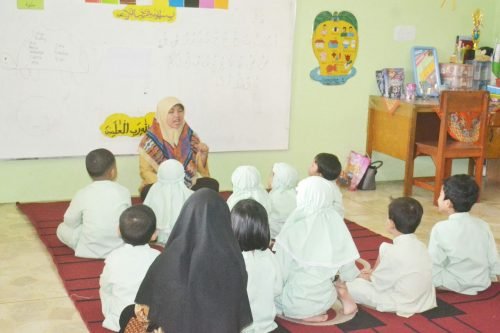
The importance of education for each individual is affirmed by the issuance of Law Number 20 Year 2003 on National Education System in Chapter III Article 4 states that: "Education is conducted in a democratic and fair and non-discriminatory manner by upholding human rights, religious values, cultural values and plurality of nations ". (Law No. 20/2003).
Early childhood is an individual who is experiencing the process of growth and development is very rapid, even said to be a leap of development. Early childhood has a very valuable age range compared to the later ages because the development of his intelligence is extraordinary. The age is a unique phase of life, and is in the process of change in the form of growth, development, maturation and improvement, both in the physical and spiritual aspects that last a lifetime, gradually, and sustainably. Yuliani Nurani Sujiono (2009: 12).
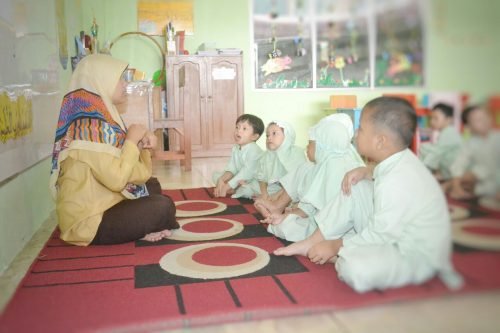
Early childhood of different individual, unique, and has its own characteristics according to the stage of his age. At this time the stimulation of all aspects of its development has an important role for the task of further development. Early childhood cells grow and grow very rapidly, brain growth is undergoing tremendous growth, as well as physical growth and development.
The early stage of fetal development is very important in the development of brain cells, and some even think that at birth the number of brain cells does not increase again. Next after birth occurs the process of elimination of nerve cells and the formation of intercellular relationships. In this case there are two things that are very important and noted in the formation of intelligence; namely a nutritious and balanced diet and a positive and conducive stimulation. Depdiknas (2002: 45).
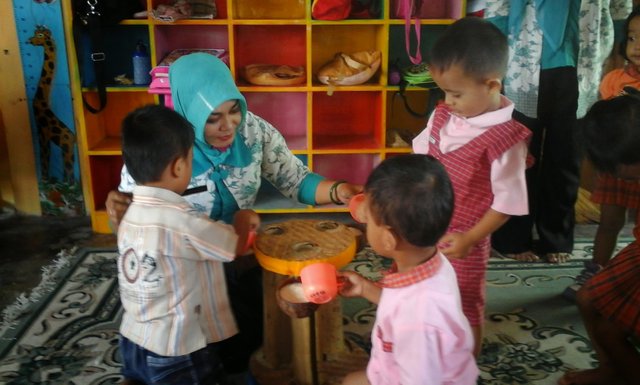
Early childhood education is one form of education that focuses on laying the foundation toward physical growth and development (fine and coarse motor coordination), intelligence (intellect, creativity, emotional intelligence, spiritual intelligence), emotional (attitude and behavioral as well as religion) language and communication, in accordance with the uniqueness and stages of development traversed by early childhood. Mansur (2009: 41).
This age-old competency standard consists of developing aspects of language, social, cognitive, emotional, social morals, and religious values. Aspects of language development at beginner level (infant) can be considered a kind of speech preparation. In the first months, babies are just good at crying. In this case the baby's crying is considered a statement of displeasure. Then he cries differently according to the intention to be declared. Furthermore, it emits a lot of sounds (voices) but the sounds have no meaning, only the breathing exercises. By the middle age of the first year, imitating the voices he was listening to, but not because he already understood what was being said to him.
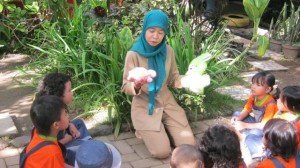
Cognitive aspects. Individual differences in infant cognitive development have been studied through the use of developmental scales or infant intelligence tests. It is important to know whether a baby develops at a slow, normal, or fast rate. If an infant develops at a slow rate, some form of enrichment is important. However, they are advised to provide toys that are more difficult to stimulate their cognitive growth. The ability of cognition or intelligence that should be dikusai by children aged 3-4 years include the ability to think logically, critically, give reasons, solve problems, and find cause and effect relationship.
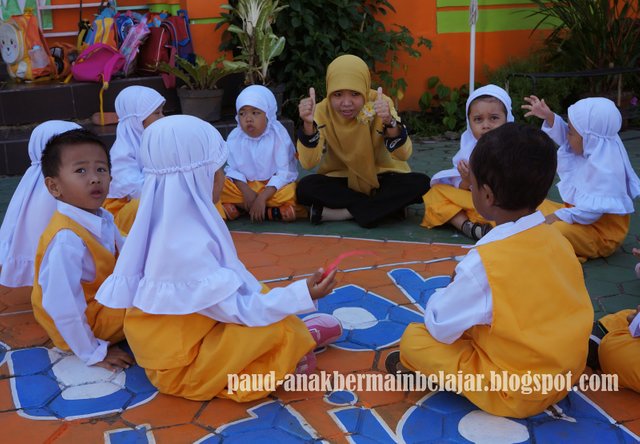
Aspects of emotion. Before a one-year-old baby, emotional expression is known to be similar to that in adults. Furthermore, infants exhibit emotional reactions, including joy, anger, fear, and happiness. It is not just a general emotional pattern that follows a predictable path, but patterns of different kinds of emotions can also be foreseen. For example, the tempertantrums reaction peaked between 2 and 4 years of age, and then replaced with a more mature expression pattern, such as a sullen and Bengal stance.
Social aspects. According to traditional beliefs some people are born with a social nature and some do not. People who are more concerned with themselves than with others, or those whose social minds are more focused on things outside of themselves, naturally are already so, or because of heredity. Also people who oppose the public are people who are anti social.
Moral aspect and religious values. Moral behavior means behavior that conforms to the social group's moral code. "Moral" comes from the Latin word meaning ordinance, custom, and custom. Moral behavior is controlled by moral concepts. A behavioral rule that has become a habit for members of a culture and that determines the expected behavioral pattern of all group members.
Development of moral values in kindergarten, closely related to the formation of behavior and attitude of children. Therefore, it is necessary a learning method in accordance with the development and ability of students. To implement the program of moral behavior of children, the teacher must learn various approaches appropriate to the level of development and needs of students. One of them through the formation of moral behavior of children by the method of story.
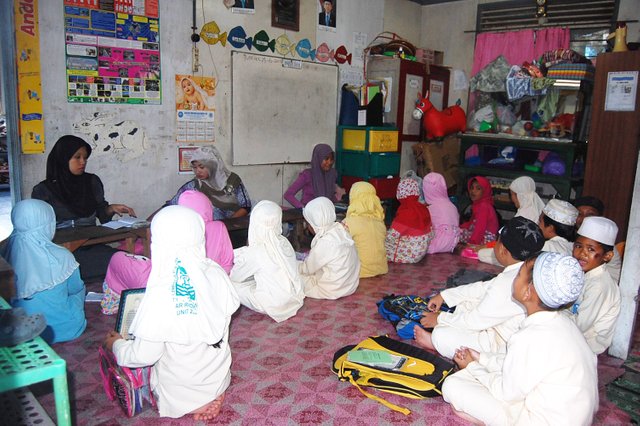
The child is a human component that occupies a central position in the learning process. During the learning process, children are people who want to achieve goals and have goals and want to achieve those goals optimally. Everything must be tailored to the components that support that achievement. When the learning process is done, it needs to be implanted social values, moral and religious to early childhood.
According Suyanto (2005: 67), moral development of children is characterized by the ability of children to understand the rules, norms, and ethics that apply. According to Susanto (2012: 45) that morality is a willingness to accept and perform rules, values and moral principles. These moral values, such as the call to do good to others, maintain order and security, maintain cleanliness and preserve the rights of others, prohibit gambling, stealing, killing and drinking (khamar). A person can be said to be moral, if the person's behavior is in accordance with moral values upheld by his social group.
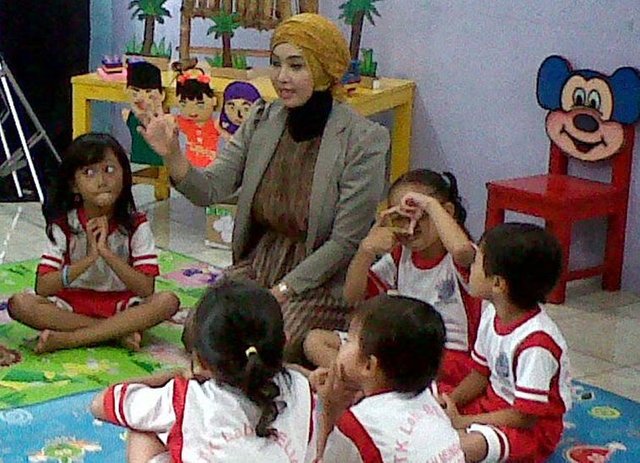
The method according to Ramyulis (2005: 56) comes from the meta word through, and the street hodos. So the method is the path that must be passed to achieve a goal. Meanwhile, according to Saiful Bahri Djamarah (2010: 77) means a systematic way of working to facilitate the implementation of an activity in order to achieve the determined goals. According Sumiat and Asra (2009: 99), the method is a regular way and thought carefully to achieve a purpose.
Effectiveness comes from the effective base word. In the Indonesian dictionary, the word effective means having an effect, effect or effect. Then the effectiveness can be interpreted how the level of success that can be achieved (achieved) from a particular way or business in accordance with the objectives to be achieved. Sutan Muhammad Zain, (1996: 34).
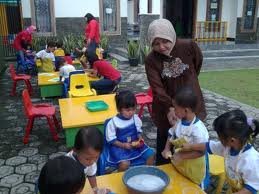
The effectiveness of methods in learning plays a very important role, because it is the procedure in determining learning steps to achieve a goal. By using effective and appropriate methods, teachers will be able to achieve the expected goals in learning. Learning process can be achieved optimally when accompanied by the use of appropriate learning methods. Agung (2012: 1) states that, the method derives from the word methodos, etymologically methodos derived from the root of metha and hodos. Metha means to pass and hodos means road.
According to Harjanto, (2005: 60) application is "application" as the ability to use materials learned in new and real situations, including the ability to apply rules, methods, concepts, principles and theories. "In addition, which is usually interpreted as a program or plan that has been arranged systematically in concrete form in the field that is concrete. "Director General of Islamic Institutional Development (1997: 4).
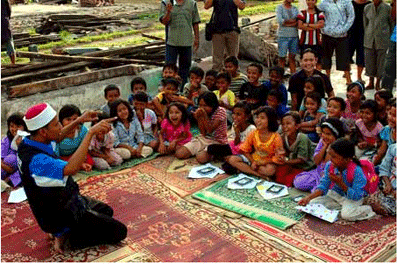
Implementation of appropriate and appropriate methods is needed in learning activities, because the method of learning that is not appropriate will be a barrier to the smooth running of a teaching and learning process. The method used to realize the strategy that has been set. Thus, the methods in the learning system sequences play a very important role.
Learning method has a very important role in learning process in kindergarten. Some of the methods found in lessons in Kindergarten are play methods, field trip methods, conversational methods, storytelling methods, demonstration methods, project methods, assignment methods. Isjoni (2010: 86). One method that can be applied to child moral is the method of storytelling (Musfiroh, 2005: 79). The storytelling method is one of the provision of learning experiences for children of kindergarten by bringing the story to the child orally. Moeslichatoen (1999: 157).
The storytelling method is one of the most widely used methods in kindergarten. As a storytelling method invites children's attention to learn according to the theme of learning. When the content of the story is related to the world of the child's life in kindergarten, then they can understand the contents of the story, they will listen to it attentively, and can easily capture the contents of the story.
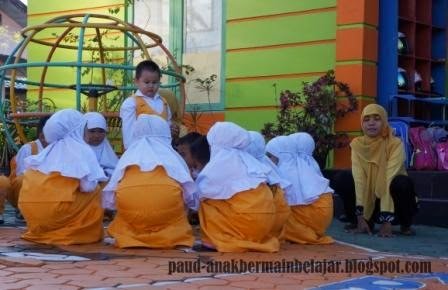
Fadillah and Khorida (2013: 179) describes the method of storytelling is a way of delivering learning materials through stories or stories that can attract the attention of learners. According to Moeslichatoen (2004: 157), the storytelling method is one of provision of learning experiences for kindergarten children by bringing the story to the child orally. Stories brought by teachers should be interesting, and invite the attention of children and can not be separated from the educational goals for kindergarten children.
According to Isjoni (2009: 90), telling stories can also be a medium to convey the values prevailing in society. A good storyteller will make the story as something interesting and lively. Children's involvement with stories will provide a fresh, exciting atmosphere and a unique experience for children.

According Moeslichatoen (2004: 170-171), the purpose of the story method, namely through storytelling, children absorb the messages are told through the activities of storytelling. The story-telling stories that are full of information or values are appreciated by the child and applied in daily life, in the storytelling activities of the mentored children develop the ability to listen to teachers' stories that aim to provide information or inculcate social, moral and religious values. Provision of information about the physical environment and social environment.
Accordingly, Zainal Fanani in Fadillah and Khorida (2013: 180-181) argues that the function of story or story (Islam) in children's education, as follows: (a) as a means of contact between teachers / ustadz or parents with children , (b) as a medium for the delivery of moral messages or certain doctrinal values, (c) as a method of providing supplies to students in order to be able to carry out the process of self-identification as well as the identification of deeds, (d) as a means of emotional education (e) as a means of fantasy education / creativity (creativity) of children, (f) as a means of developing children's language skills, (g) as a means of education of the child's mind power, (h) as a means of enriching the inner experience and the treasures of the child's experience, (i) as one of the methods to provide therapy for children with psychological problems.